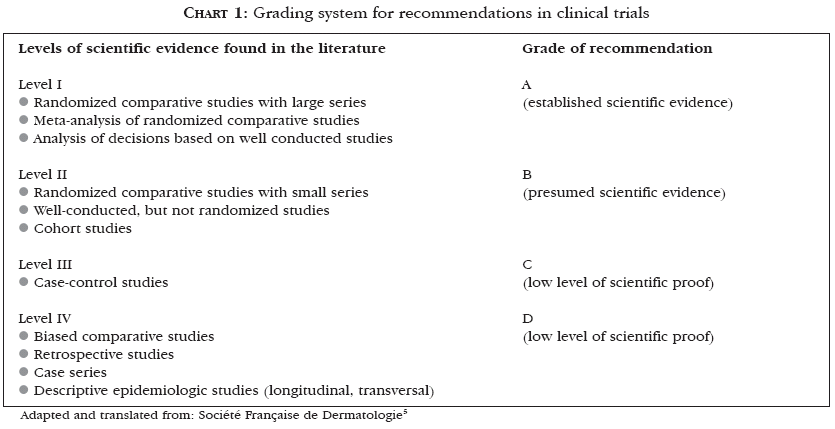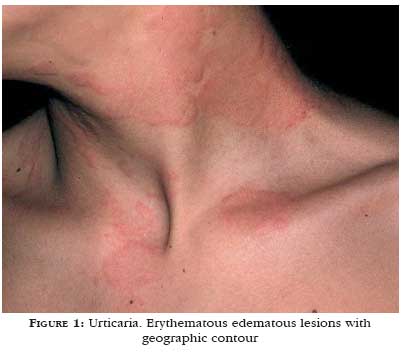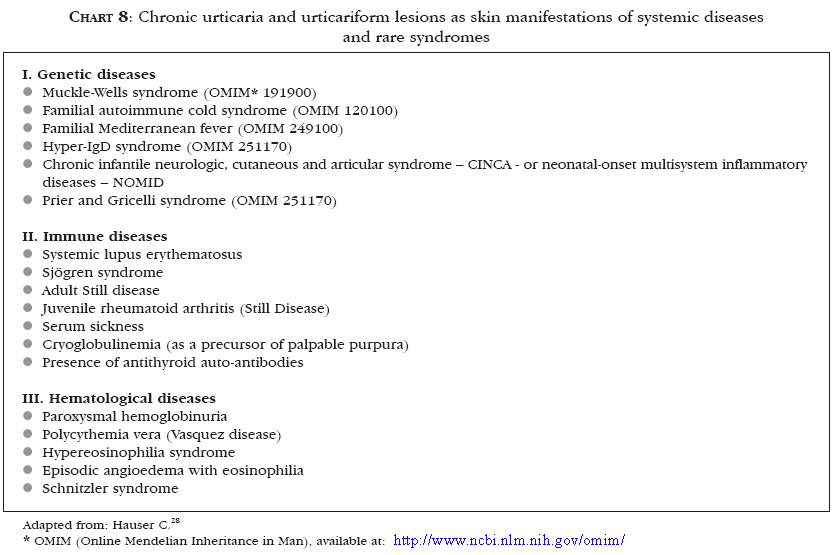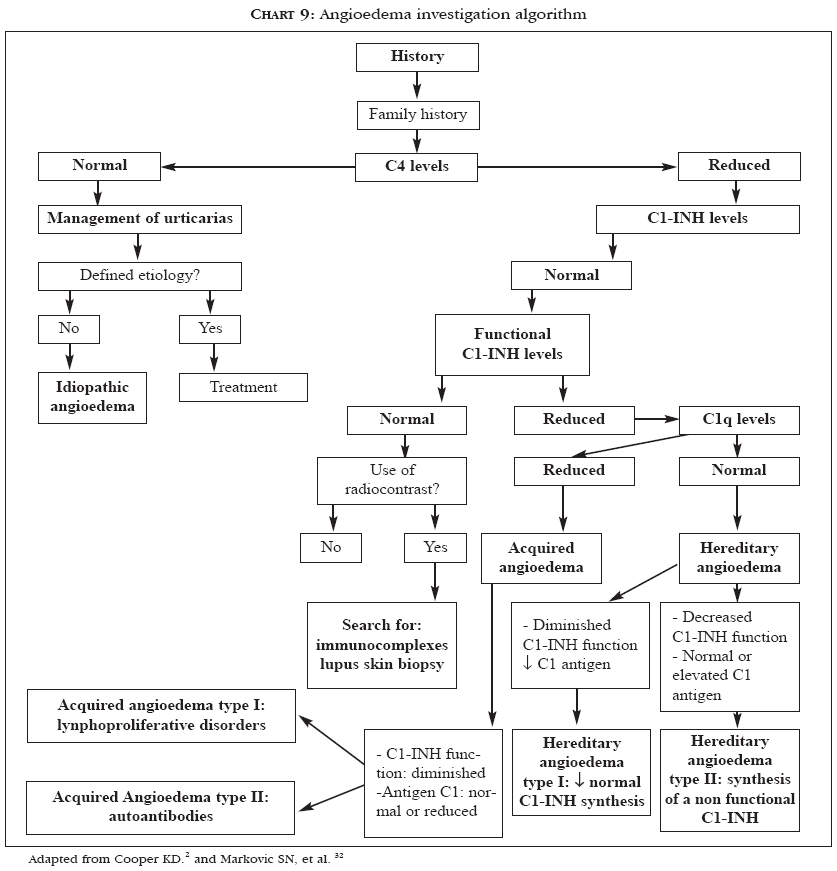Urticaria has diverse clinical presentations and causes. It is one of the most frequent dermatological conditions: 15% to 20% of population has at least one acute eruption during their lifetime, resulting in 1% to 2% of dermatological and allergological visits. Urticaria is classified based on its temporal evolution as acute (less than 6 weeks) or chronic (more than 6 weeks). Management strategies may involve non-pharmacological measures and drug interventions, which are grouped into first- (antihistamines), second- (corticosteroids and anti-leukotrienes) and third-line therapies (immunomodulators). Stronger, but potentially riskier, second- and third-line management may be justified for patients who do not respond to first-line therapy, or whenever a specific etiology cannot be determined, such as in autoimmune urticaria.
Adrenal Cortex Hormones; Cyclosporine; Histamine; Histamine Antagonists; Histamine H1 Antagonists; Histamine H2 Antagonists; Mast cells; Prostaglandins; Urticaria



















